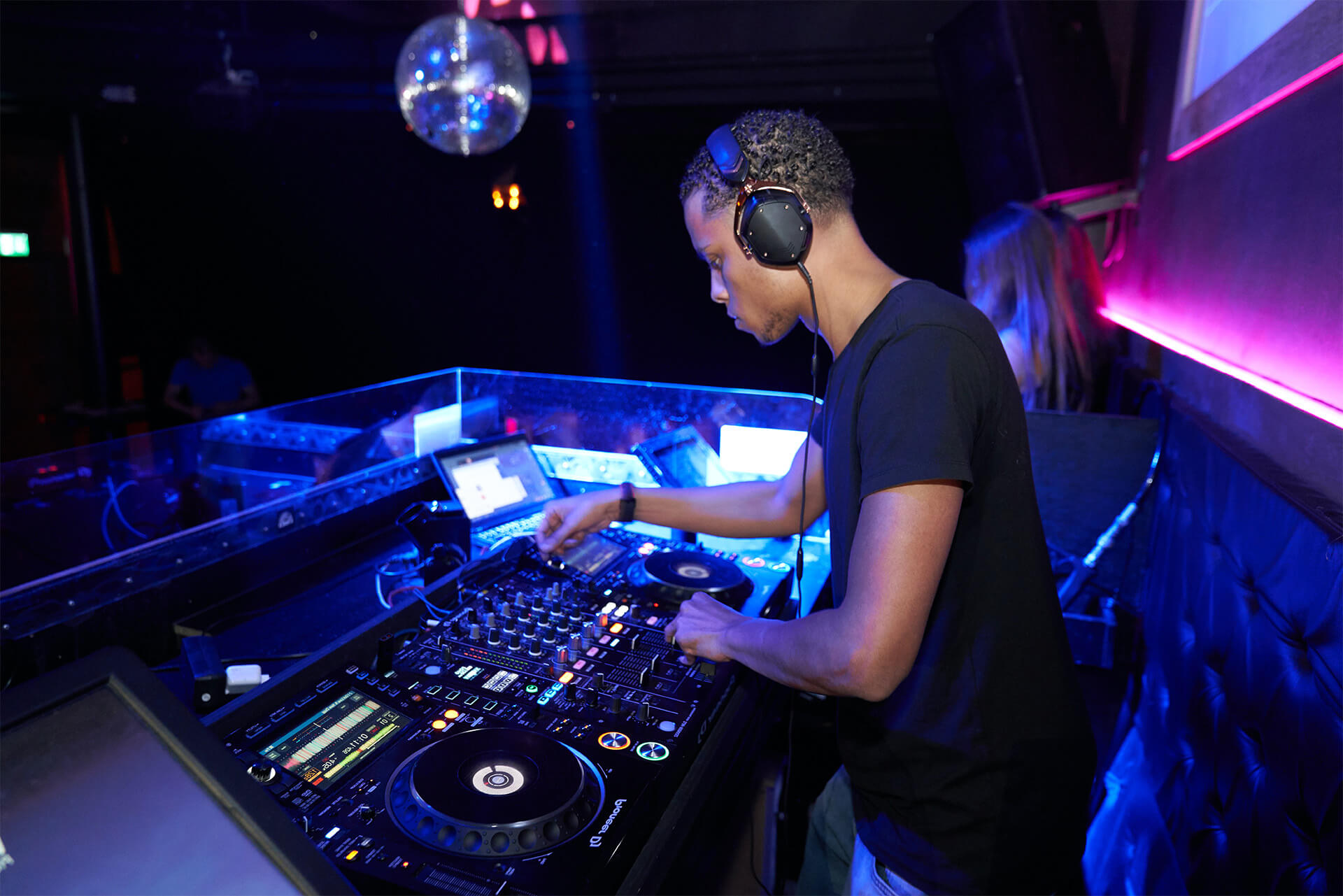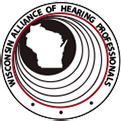Night clubs and dance clubs have become a significant part of the entertainment scene for many adults, and attending such clubs (clubbing) is a common recreational activity for many.
The average noise levels at these venues have been measured to be in the range of 100 dB.
These environmental conditions are certainly amenable to a potential noise hazard, and nightclub employees working who work full-time in those conditions can have problems with their overall hearing quality.
Read More: What professions can cause hearing loss? >
Table of Contents
- What effect does noise exposure have on hearing in the long term?
- What is Hidden Hearing Loss?
- Study about Occupational Hearing Loss among Night Club Workers in Accra-Appea-Korang
- I work in a nightclub, what should I do to prevent potential hearing loss?
- I work in a nightclub, what should I do if I feel I have been affected?
- Hearing Loss Workers Compensation Benefits
- Sources
What effect does noise exposure have on hearing in the long term?
Loud music and noise are seen as essential parts of the events industry. This leads to staff working within that sector being at significant risk of being left with permanent hearing problems.
Loud noise can damage cells and membranes in the cochlea. Listening to loud noise for a long time can overwork hair cells in the ear, which can cause these cells to die.
The hearing loss progresses as long as the exposure continues. Harmful effects might continue even after noise exposure has stopped, and damage to the inner ear or auditory neural system is generally permanent.
Aside from the fact that loud music damages hair cells, it can also damage the auditory nerve that carries information about sounds to your brain.
Early damage may not show up on your hearing test, because it can create a “hidden hearing loss” that may make it difficult for you to understand speech in noisy places.
The effect of loud noise over time affects how well you might hear later in life. It also affects how quickly you might develop hearing problems, even after exposure has stopped.
Read More: Ear damage from loud noise – Noise-Induced Hearing Loss and Tinnitus >
What is Hidden Hearing Loss?
Hidden hearing loss is defined as hearing loss that’s not detectable on standard hearing tests, which aims at problems within the ear.
Noise pollution and aging combine to aggravate the problem. Most researchers feel that long exposures to even low-level noise may cause hidden hearing loss and most agree that the aging auditory system reveals this problem.
Read More: About Hearing Loss >
Study about Occupational Hearing Loss among Night Club Workers in Accra-Appea-Korang, E.; 2018;
The aim of the study – To determine the level of noise that nightclub workers are exposed to and the prevalence of noise-induced hearing loss among them.
Methods – Fifty nightclub workers with at least one year of continuous working experience, were sampled from five nightclubs in Accra.
A structured questionnaire was administered to obtain socio-demographic data, workers’ knowledge about the signs and effects of occupational noise exposure, as well as hearing protection devices and their use.
Results – Average noise levels in all three clubs were 89.6 dBA. Only 8 (16%) of the respondents knew about hearing protection devices, but none of the fifty used hearing protection during a shift.
There was a significant connection between the duration of employment and the degree of hearing loss at 4 kHz in both left and right ears.
Thresholds at 2 kHz, 3 kHz, and 4 kHz showed normal hearing in the frequencies of 2 and 3 kHz (in both ears), with elevated thresholds in the 4 kHz frequency, indicating mild hearing loss.
Read More: Understanding High and Low-Frequency Hearing Loss >
Conclusion – This suggests a significant connection between the duration of exposure and the degree of hearing loss, and that nightclub workers were at risk of developing noise-induced hearing loss.

Source: Unsplash
I work in a nightclub, what should I do to prevent potential hearing loss?
- The noise level made by speakers must be uniformly distributed over the dance floor to prevent spots where excessively high levels may occur. If you can recognize those spots, avoid them as much as you can.
- Loudspeakers should be directional and located so that they concentrate their radiation onto the dance floor and away from the staff working locations – which should also be positioned away from the dance floor.
- Regular staff rotation to limit the time employees are working in excessively noisy areas. The daily noise exposure of employees is influenced by the amount of time spent in the noisy areas and it is therefore imperative that this is countered by also allocating time in the quieter zones of the premises.
Hearing conservation programs can also be developed for employees within clubs, including:
- Routine audiometry.
- Conducting noise assessments.
- Regular sound level measurements.
- Notifying employees of the risk to their hearing.
- Supply hearing protection and offering training on their use.
In another survey commissioned to look into the noise exposure of workers at live concerts, it was found that in general personnel employed in the live entertainment industry are exposed to noise levels above the upper exposure action level.
As such, they should be provided with and enforced to wear hearing protection.
Read More: Hearing Protection At Work >
How are the employers within the entertainment sector working to protect the health and safety of their employees?
In a study published in the International Journal of Noise & Health, a Dublin researcher analyzed noise from two nightclub employees at a number of different nightclubs in Ireland.
A sound level meter was placed at the bar closest to the dance floor and a dosimeter was attached to the shirt of each participant. It was found that the average daily noise exposure of the participants working 20 hours per week was 92 decibels.
Over time, noise exposure greater than 85 decibels for eight hours can lead to permanent hearing loss.
Work safety laws in the European Union require hearing protection to be provided to workers exposed to more than 85 decibels.
However, only two clubs in the study provided this protection, and only one required employees to wear the protection.
Read More: How to prevent Hearing Loss? >
I work in a nightclub, what should I do if I feel I have been affected?
If you have been working in a nightclub, bar, or the live entertainment industry and now find that you regularly have to ask people to repeat themselves or can’t follow audible conversations, it could be as a result of your work.
If you want to look into investigating this further please contact Johnson Law Offices today. There are strict time limits on making claims and you should look to do so as soon as you are aware of the potential link to your work.
Hearing Loss Workers Compensation Benefits
Since 1911, there have been over 2.5 million workers’ compensation claims filed. Hearing loss workers’ compensation claims now rank #3 in the number of occupational diseases claims filed.
Hearing loss workers’ compensation benefits are largely undiscovered benefits covering hearing health care, which is often uninsured. Many health insurance policies and programs like Medicare do not cover hearing aid purchases but workers’ compensation can.
It also pays for the disability of hearing loss just as it does for the loss of eyesight or other injuries.
Aging populations, advances in technology, and greater sensitivity to hearing loss are bringing more attention to financing hearing health care.
For the most part, those who qualify for hearing loss workers’ compensation benefits are retired hearing-impaired workers who live on fixed incomes.
Sources
- https://www.cdc.gov/nceh/hearing_loss/how_does_loud_noise_cause_hearing_loss.html
- https://www.oakwoodsolicitors.co.uk/news/noise-nightclub-worker/
- https://research-management.mq.edu.au/ws/portalfiles/portal/62463859/Publisher+version+%28open+access%29.pdf
- https://canadianaudiologist.ca/occupational-noise-exposure-in-nightclubs/
- http://ugspace.ug.edu.gh/bitstream/handle/123456789/27335/Occupational%20Hearing%20Loss%20among%20Night%20Club%20Workers%20in%20Accra.pdf?sequence=1&isAllowed=y
Contact Us
If you, or anyone you know, worked in noise and suffers from hearing loss, please do not hesitate to contact us.
Contact Us


